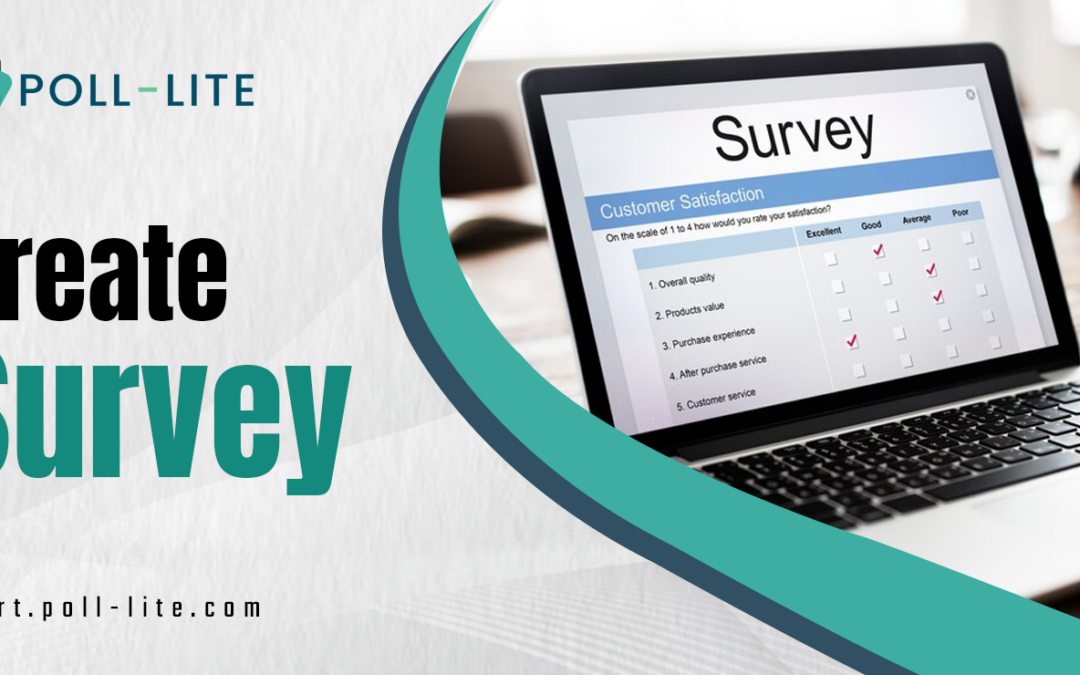Understanding your customers’ needs and preferences is paramount in today’s competitive business landscape. One of the most effective ways to gain this insight is by conducting surveys. However, not all surveys are created equal. To drive business growth, designing surveys that gather valuable feedback is essential. This will enable you to make informed decisions that enhance product development and customer service. In this blog, we’ll guide you through creating a survey that collects meaningful data and helps you achieve your business goals.
Why Customer Feedback is Crucial for Business Growth
Before diving into the mechanics of how to create a survey, it’s important to understand why customer feedback is so valuable. Customer feedback is a direct line of communication between your business and your audience. It provides insights into how your products or services are perceived, identifies areas for improvement, and highlights what your customers value the most. When used effectively, this feedback can:
- Inform Product Development: By understanding what your customers want, you can tailor your products or services to meet their needs, leading to higher satisfaction and increased sales.
- Enhance Customer Service: Feedback can reveal gaps in your customer service, allowing you to improve customer loyalty and retention.
- Increase Customer Loyalty: Customers who feel heard and see that their feedback leads to positive changes are likelier to remain loyal to your brand.
- Drive Marketing Strategies: Customer insights can inform your marketing efforts, helping you to craft messages that resonate with your target audience.
Now that we’ve established the importance of customer feedback let’s explore how to create a survey that effectively gathers this information.

Step 1: Define Your Objectives
The first step in creating a survey is to define your objectives clearly. What do you hope to achieve with this survey? Are you looking to improve a specific product, enhance customer service, or understand customer satisfaction levels? Having a clear objective will help you design a focused and relevant survey.
For example, your objective is to gather feedback on a new product. In that case, your survey questions should be geared toward understanding how customers perceive the product, what features they like or dislike, and any suggestions they have for improvement. On the other hand, if your goal is to improve customer service, your questions should focus on the customer experience, response times, and satisfaction with support.
Step 2: Choose the Right Survey Tool
Choosing the right tool to create a survey is crucial. There are numerous online survey platforms available, each offering different features. When selecting a tool, consider the following factors:
- Ease of Use: The tool should be user-friendly, allowing you to create and distribute surveys easily.
- Customization Options: Look for a tool that allows you to customize the survey’s appearance, question types, and logic.
- Reporting and Analysis: The tool should provide robust reporting features, enabling you to analyze the results effectively.
- Cost: If you have a limited budget, you should create a free survey using platforms that offer free plans or trials.
Some popular survey tools include Google Forms, Poll Lite, and more. These platforms offer a range of features, from basic survey creation to advanced analytics.
Step 3: Design Effective Survey Questions
The questions you include in your survey are the heart of your data collection. Well-designed questions yield valuable insights, while poorly crafted questions can lead to biased or irrelevant responses. Here are some tips for designing effective survey questions:
- Keep it Simple: Avoid using jargon or complex language. Questions should be easy to understand, ensuring all respondents interpret them similarly.
- Be Specific: Specific questions yield specific answers. Instead of asking, “How do you feel about our product?” ask, “How satisfied are you with the ease of use of our product?”
- Use a Mix of Question Types: Incorporate a variety of question types, such as multiple-choice, Likert scale, and open-ended questions. This will give you a well-rounded view of customer opinions.
- Avoid Leading Questions: Ensure that your questions are neutral and do not lead respondents toward a particular answer. For example, instead of asking, “How amazing was your experience with our customer service?” ask, “How would you rate your experience with our customer service?”
- Limit the Number of Questions: Long surveys can lead to survey fatigue, causing respondents to rush through or abandon the survey. Aim to keep your survey concise, focusing on the most important questions.
Step 4: Test Your Survey
Before launching your survey to a wider audience, testing it with a small group of respondents is important. This allows you to identify issues with question clarity, survey flow, or technical glitches. Based on the feedback from this test group, make any necessary adjustments to improve the survey.
Step 5: Distribute Your Survey
Once your survey is ready, it’s time to distribute it to your target audience. The distribution method you choose will depend on your audience and objectives. Some common distribution methods include:
- Email Surveys: Sending the survey via email is one of the most effective ways to reach your existing customers. Be sure to craft a compelling email subject line and message that encourages recipients to participate.
- Website Surveys: Embedding the survey on your website can capture visitors’ feedback while actively engaging with your content or products.
- Social Media Surveys: Sharing your survey on social media platforms can help you reach a broader audience and gather feedback from customers and potential customers.
- In-App Surveys: If you have a mobile app, consider integrating the survey within the app to capture feedback from users directly.
Step 6: Analyze the Results
After collecting responses, the next step is to analyze the data. Most survey tools offer built-in analytics, making identifying trends, patterns, and key insights easy. Here are some key points to consider during the analysis:
- Look for Common Themes: Identify common themes or recurring issues mentioned by multiple respondents. These insights can highlight areas that need attention.
- Segment the Data: Segment the data based on customer demographics or behaviors. This can help you understand how different groups perceive your products or services.
- Prioritize Actionable Insights: Focus on insights that can directly inform product development or customer service improvements. For example, if many customers find a certain feature difficult to use, prioritize addressing this issue in your next product update.
Step 7: Take Action and Communicate Changes
The final step in the survey process is to take action based on the feedback you’ve received. This is where the true value of a survey lies—in using the insights to drive positive changes within your business. Whether it’s improving a product, enhancing customer service, or refining your marketing strategies, taking action shows your customers that their feedback is valued.
Moreover, communicate these changes to your customers. Let them know that their feedback has led to specific improvements. This builds trust and encourages customers to continue providing feedback in the future.

Conclusion
Creating a survey for customer feedback is a powerful tool for driving business growth. By carefully designing your survey with clear objectives, choosing the right tools, and analyzing the results, you can gather valuable insights that inform product development and customer service improvements. Remember, the key to a successful survey is collecting data and using that data to make meaningful changes that enhance the customer experience.
So, to create a survey that drives business growth, start by defining your goals, designing effective questions, and choosing the right tools. Whether you create a free survey or opt for a premium tool, the insights you gain will be invaluable in taking your business to the next level. For the best survey tool online, visit us at Poll Lite!

